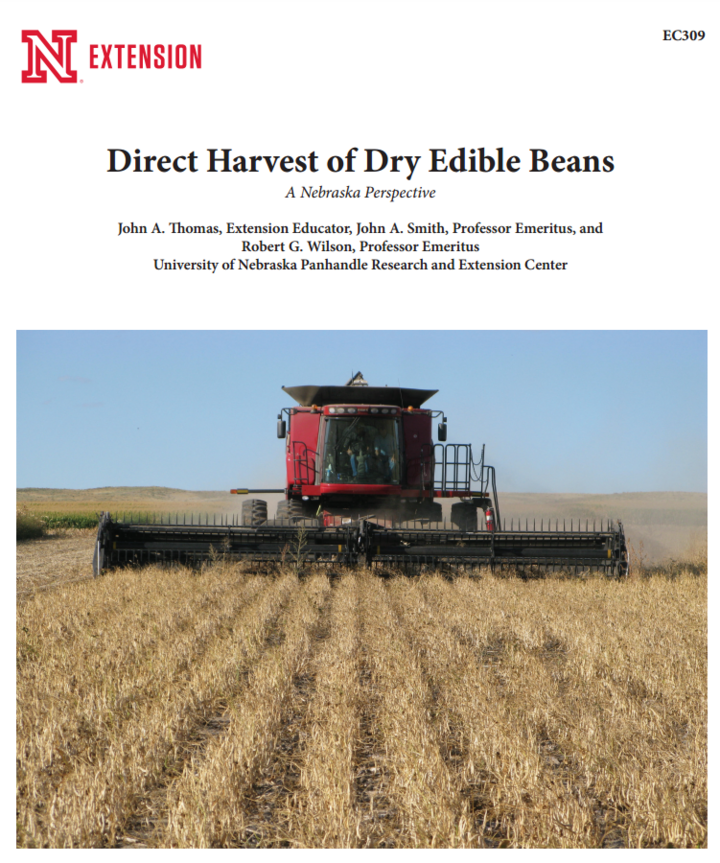Nebraska Extension has released a new comprehensive resource on direct harvest of dry edible beans for Nebraska producers.
Direct harvest is relatively new to Nebraska bean growers, but has gained rapid acceptance over the past several years. It describes the practice of harvesting beans by a single pass through the field with a combine, in contrast with the conventional undercutting and windrowing process, followed by combining after the beans have dried in the windrow.
Nebraska Extension Circular 309, Direct Harvest of Dry Edible Beans, can be downloaded from the Nebraska Extension Publications website.
Authors are Extension Educator John Thomas; Professor Emeritus John A. Smith, retired machinery systems specialist; and Professor Emeritus Robert G. Wilson, retired weed specialist at the Panhandle Research and Extension Center.
Thomas, who is based in Box Butte County, said the new circular represents about 30 years of work on direct harvest, primarily by Smith, retired machinery systems engineer, but also by several other specialists and educators.
The circular examines why some bean growers have started using direct harvest and why other growers are not. Its 19 pages provide a detailed discussion of cropping practices that will lead to a successful direct harvest. According to Thomas, direct harvest must be considered as a total cropping system, not just a change in combine header.

Topics include row spacing, plant population, variety selection, type of planter, weed control, irrigation, diseases, timing of harvest, combine header selection, and monitoring seed quality and harvest loss.
The difference between a successful direct harvest crop and disappointment is “almost always attention to, and proper execution of, details of the entire cropping system,” it notes, adding that harvest is the most important field operation in terms of risk and cost.
In 2010, only about 5% of Nebraska dry bean acreage was direct harvested, Thomas said. Since then, some growers in western Nebraska and adjoining areas of Colorado and Wyoming have begun to direct harvest pinto and great northern beans and by 2014, an estimated 20% of the Nebraska crop was direct harvested. Thomas said he expects the trend to continue.
Direct harvest is not a new practice for dry edible beans. Some growers in Michigan and North Dakota have used it for navy beans for over 30 years, and more recently for pinto beans. For example, direct harvest of pinto beans in North Dakota in 2012 was estimated to be at least 70%.
The new Nebraska Extension Circular concludes that direct harvest can be successful in Nebraska, based on the growing number of Nebraska dry bean growers who are switching.
“But the practice does not fit every operation at this time. Each producer must carefully examine his or her own operation and weigh the advantages and disadvantages, observe neighbors’ operations, and talk with other producers or extension educators. If you decide direct harvest might fit your operation, develop a plan to move carefully into the new production system.”
